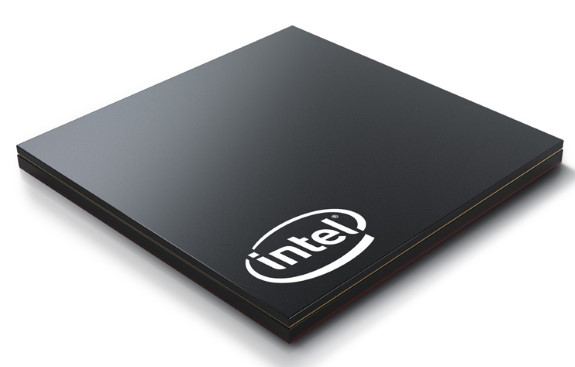
This results in a 12mm x 12mm x 1mm SoC that features a high-performance core, four low-power cores, Gen11 integrated graphics, and LPDDR4X memory all-in-one. Both Lakefield chips have a 7W TDP.
The first Lakefield-based devices will be the Lenovo ThinkPad X1 Fold and the Samsung Galaxy Book S. The former should ship sometime later this year while the Samsung Galaxy Book S is expected later this month;
What's New: Today, Intel launched Intel® Core™ processors with Intel® Hybrid Technology, code-named "Lakefield." Leveraging Intel's Foveros 3D packaging technology and featuring a hybrid CPU architecture for power and performance scalability, Lakefield processors are the smallest to deliver Intel Core performance and full Windows compatibility across productivity and content creation experiences for ultra-light and innovative form factors.
"Intel Core processors with Intel Hybrid Technology are the touchstone of Intel's vision for advancing the PC industry by taking an experience-based approach to designing silicon with a unique combination of architectures and IPs. Combined with Intel's deepened co-engineering with our partners, these processors unlock the potential for innovative device categories of the future." –Chris Walker, Intel corporate vice president and general manager of Mobile Client Platforms
Why They're Great for Innovative PC Form Factors: Intel Core processors with Intel Hybrid Technology deliver full Windows 10 application compatibility in up to a 56% smaller package area for up to 47% smaller board size and extended battery life, providing OEMs more flexibility in form factor design across single, dual and foldable screen devices while delivering the PC experiences people expect. They are also:
The first Intel Core processors shipping with attached package-on-package (PoP) memory, further reducing board size. The first Intel Core processors to deliver as low as 2.5mW of standby SoC power – an up to 91% reduction compared to Y-series processors – for more time between charges. The first Intel processors to feature native dual internal display pipes, making them ideally suited for foldable and dual-screen PCs.
When You Can Get It: Two announced designs powered by the Intel Core processors with Intel Hybrid Technology and co-engineered with Intel include the Lenovo ThinkPad X1 Fold, the first fully functional PC with a folding OLED display unveiled at CES 2020 and expected to ship this year, and the Intel-based Samsung Galaxy Book S expected in select markets starting in June.
About Key Features & Capabilities: Intel Core i5 and i3 processors with Intel Hybrid Technology leverage a 10nm Sunny Cove core to take on more intense workloads and foreground applications, while four power-efficient Tremont cores balance power and performance optimization for background tasks. The processors are fully compatible with 32- and 64-bit Windows applications, helping reach new heights for the thinnest and lightest designs.
Smallest package size, enabled by Foveros: With Foveros 3D stacking technology, processors achieve a dramatic reduction in package area – now only a miniscule 12x12x1 mm, approximately the size of a dime – by stacking two logic dies and two layers of DRAM in three dimensions, also eliminating the need for external memory. Hardware-guided OS scheduling: Enabling real-time communication between the CPU and the OS scheduler to run the right apps on the right cores, the hybrid CPU architecture helps deliver up to 24% better performance per SOC power and up to 12% faster single-threaded integer compute-intensive application performance. More than 2x throughput on Intel UHD for AI-enhanced workloads: Flexible GPU engine compute enables sustained, high-throughput inference applications – including AI-enhanced video stylization, analytics and image resolution upscaling. Up to 1.7x better graphics performance: Gen11 graphics delivers seamless media and content creation on the go – the biggest leap in graphics for Intel processor-based 7-watt systems. Convert video clips up to 54% faster, and with support for up to four external 4K displays, immerse in rich visuals for content creation and entertainment. Gigabit connectivity: With support for Intel® Wi-Fi 6 (Gig+) and Intel LTE solutions, experience seamless video conferencing and streaming online.

Specifications:
| Processor Number | Graphics | Cores / Threads | Graphics (EUs) | Cache | TDP | Base Freq (GHz) | Max Single Core Turbo (GHz) | Max All Core Turbo (GHz) | Graphics Max Freq (GHz) | Memory |
| i5-L16G7 | Intel UHD Graphics | 5/5 | 64 | 4MB | 7W | 1.4 | 3.0 | 1.8 | Up to 0.5 | LPDDR4X-4267 |
| i3-L13G4 | Intel UHD Graphics | 5/5 | 48 | 4MB | 7W | 0.8 | 2.8 | 1.3 | Up to 0.5 | LPDDR4X-4267 |